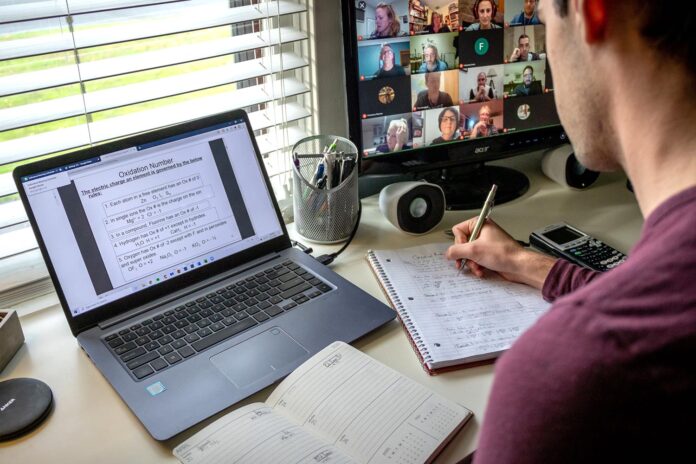
Nobody could’ve expected the events that ensued this year and the COVID-19 pandemic that took hold of the world. As the landscape forced businesses and individuals to adapt, schools became a point of question. Would students and educators alike be expected to return to normalcy soon?
Of course, this has not been the case, and teachers have had to grow accustomed to an online teaching environment.
Last spring, just after students finished their first semester, the Tigard-Tualatin School District (TTSD) made a sudden switch to distance learning. Students had no other choice but to learn from home and teachers to educate in a haphazard environment.
“Last spring, I felt as though many teachers and students were surviving to the end of the school year,” said Hazelbrook Middle School band teacher Melissa Ruiz. “Distance learning was brand new and many students and families were dealing with the shock of everything.”
“It was like the house was on fire, but we were still painting the back of it,” said Hazelbrook PE teacher Gavin Harrison. “The focus became relationship building and fulfilling the immediate needs of families in our community. But that came at the expense of, we don’t know how to do online school.”
Still, the 2019-2020 school year finished out, and the district put a plan in motion for the upcoming online academic year.
As part of TTSD’s middle school plan, core-subject educators were expected to shift from teaching their primary subject to teaching two subjects across one group of students. Because of this, Aubrey Hill, a middle school math teacher for more than 21 years, had a first-time experience teaching eighth-grade science.
“It was similar to feeling like a brand-new teacher all over again,” Hill said. “Through this, I have relied on my amazing colleagues who shared their expertise and pedagogy with me.”
In many of these core classes and through most grade levels, educators have utilized the new curriculum purchased by the district – Florida Virtual School – as a way to standardize material and testing throughout the district. Students attend up to four daily live classes through the video conferencing app, Google Meets, and teachers have come across many difficulties with the system.
“I think the biggest difference is that you just don’t have as much productive discussion in your classes,” said Tigard High School English teacher Jodi Mello. “Because students just aren’t in a space where they feel comfortable to do that, some students will unmute and talk, but you have a lot more of ‘It’s me sharing information.’”
Another hurdle was experienced by many teachers with larger group-based classes, such as band or physical education (PE).
At Hazelbrook, the PE faculty needed to cut out the games and have more fitness-related workouts.
“We still have a large group of students, and we’re still exercising together, the difference now is … we would do more of a fitness workout targeting cardio. or muscular strength and endurance,” Harrison said. “So, all the fun kind of game stuff is now gone because of the equipment issue.”
Band students, on the other hand, are turning in much more individual work by submitting performance videos, and critiques are offered by the instructor.
“In order for us to play synchronously together, I ask students to keep their microphones muted while they’re listening to my playing and then they play along with what they hear,” Ruiz said.
School bands typically hold concerts throughout the year, that is now not the case. Instead, Ruiz continues to work with her students individually.
“With concerts not taking place, I’ve been able to shift my instruction to be even more focused on each individual student and less focused on how we as an ensemble sound,” she said. “I’m excited to see how this will continue to benefit my students throughout this school year and in years to come.”
Despite widespread changes, it hasn’t been all bad. Through the grade levels, many teachers now have set office hours where students can receive help.
Teachers are also finding that some students are thriving in the online environment. Ruiz said that social pressure is relieved for many students and the fast pace of a typical school day just isn’t present.
Still, one huge component of an educator’s job was missing through the past few months: the connection with students.
“I think for most of us [teachers], we [teach] because we really appreciate those relationships with students,” Mello said. “It’s rewarding for us. So to not have that, it just makes it a little harder.”
Hill even visited each household of her students to get to know them.
“At the start of the year, my teaching partner and I drove all through Tualatin visiting each student at their home and meeting their families, with masks on and six feet apart,” Hill said. “Talking with families and seeing students in their home environments helped me begin to identify some of our shared needs.”
Although the Oregon Department of Education revised its guidelines to allow more students to return to school across the state, Washington County is not close to meeting the required metrics. TTSD Superintendent Sue Rieke-Smith has said that online-learning will stay for the remainder of semester one. There have been talks of plans to return elementary students to in-person in some form come second semester, but nothing has been finalized.


















